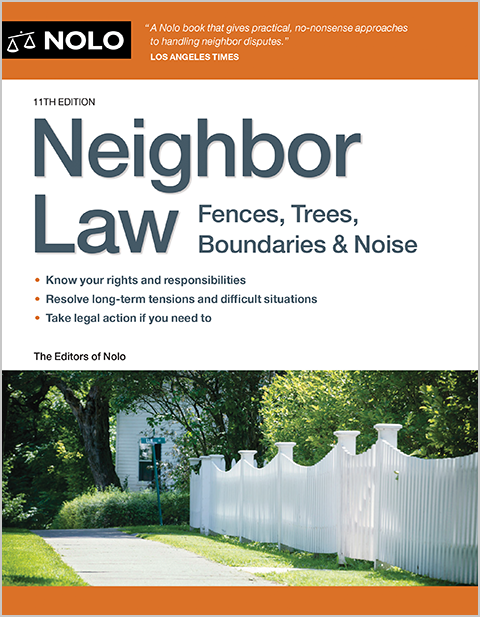If you'd like to buy into a friend's house and share space and expenses, be sure to think through all the legal and practical details first.
If you plan to buy a house with someone else (not necessarily a spouse or partner), you might go house hunting and make purchase offers together. But this isn't the only way to enter into a shared homeownership arrangement. If, for example, one of you already owns a home, the other might buy an ownership share of that home. In this article, we'll discuss:
- various possible arrangements for co-ownership of a home
- how to allot ownership rights by percentage
- ways to fairly share house expenses, and
- ways to fairly share space within the home.
Possible Logistics of Co-Ownership
Although the details are ultimately up to you and your co-owners, here are some examples of workable arrangements:
- The new co-owner-to-be can pay the original owner a lump sum to assume a percentage ownership in the equity (the value of the home, less what the owner owes on it), and the co-owners will share mortgage payments in the same percentage. For example, let's say Jackie has $100,000 of equity in her home. Tom pays her $40,000 in a lump sum, then pays 40% of the mortgage payments going forward, to own 40% of the house.
- The new co-owner to be can start making all or part of the monthly mortgage payments, thereby acquiring ownership gradually. Here's an example using some round numbers. Jamaal bought a house for $250,000, on which he made a $50,000 down payment and paid off $50,000 of the $200,000 mortgage, leaving $150,000 to be paid. Because the current market value of the house is about $300,000, he has about $150,000 of equity in the home. He quits his job to start a business, and needs to reduce his monthly expenses. He offers to let his friend Merritt move in to the back part of the house and take over the $1,500 monthly mortgage payments. Merritt's ownership in the home will grow by 0.5% with every mortgage payment she makes. They agree that Merritt will own half the home if she makes all mortgage payments for 100 months.
No matter how you decide to let the new owner buy in, make sure you add the person's name to the deed at the outset. You'll also need a clear written agreement about ownership shares and how you will divide payments and responsibility for the house. For details, see Preparing a House Co-Ownership Agreement.
Determining Ownership Percentages in a Co-Owned House
When you purchase a house with someone, you can use a handful of different criteria to decide who will own how much of the property. One simple method is to allot ownership based on the amount of the purchase price each person paid, no matter how much of the property each person uses.
EXAMPLE: If Peggy and Bill buy a house together, they might agree that Peggy will own 60% and Bill will own 40%, because that is how much each of them can afford to chip in for the down payment and mortgage.
In some situations, you might want ownership shares to change gradually as the owners take on more or less financial responsibility for the home. For example, one person might start paying a larger share of the mortgage or agree to underwrite significant improvements on the property. In this situation, the owners might decide to change their ownership percentages to reflect that one is paying more.
Owners who will divide use of the house unequally might base ownership percentages on the value of the area that each owner occupies.
EXAMPLE: Caroline and Julia buy a three-bedroom house together. They agree that Caroline will use a small bedroom and bathroom. Julia will use the master bedroom and bath, plus the third bedroom as a home office. Julia will also use the garage for parking; Caroline doesn't own a car. They will share the living room and kitchen. In this scenario, clearly Julia is getting more space out of the deal. If an appraiser determines that the space allotted to Julia is worth $350,000, while the space allotted to Caroline is worth only $150,000, they might decide that Julia will pay for—and own—70% of the house and Caroline will pay for and own the remaining 30%, in direct proportion to how they will use the property.
Caroline and Julia might also decide to simply split the ownership and mortgage payments 50/50, even though Caroline occupies a smaller area. Caroline will still benefit from the real estate investment, because she'll be entitled to half of the profit when they sell the house. They could make up for the unequal use of the house in other ways, such as by giving Julia full responsibility for all yard care and having her pay a larger portion of the property taxes and utilities.
Sharing Homeownership Expenses
Owning a home comes with a lot of expenses renters don't always need to pay, such as property taxes, repairs and maintenance, homeowner's insurance costs, and utility payments. Like your mortgage payments, down payment, and ownership percentage, you can share these expenses in any way that works for all concerned. You might decide to split everything down the middle or come up with another system of dividing expenses, based on ownership percentages, individual use of the property, financial status of the owners, or any other factors that make sense for you.
EXAMPLE: Jeri and Camila own a house together, with 75% and 25% ownership, respectively, but they share use of the house fairly equally. They split most day-to-day expenses, such as utilities, phone, water, and small repairs. Any major improvements on the house they divide according to their ownership percentage. For insurance and property taxes, Jeri pays 60% and Camila 40%. This division was based not on a careful calculation, but on a desire to even out the expenses and benefits of homeownership. Because they use the house equally, they felt that it would be unfair for Jeri to pay 75% of these expenses, but also unfair to split them when Jeri will benefit much more from an eventual sale of the house. The 60/40 split just seemed more equitable.
Sharing Space in a Co-Owned House
Unlike sharing a duplex, sharing a single-family home means that you and your co-owner will be using the same space. It's important to talk about who has a right to use particular rooms, storage areas, parking spaces, and so on, and in what ways or to what extent.
Does one of you want to use the garage as an art studio? Turn the yard into a dog run? Have a party every weekend to watch football games on a big-screen television? These are all things you should air and discuss in advance. Also talk about whether each of you can have overnight visitors or long-term guests, or sublet your share of the space.
Sharing living space can lead to disagreements and frustrations. One of the best ways to avoid these is to start with a home that's easy to share. That usually means one that creates a feeling of separate space for each person living there, whether through layout, size, soundproofing, or other features; and has enough room for everyone to enjoy common spaces together.
Here are some of the qualities that make a house shareable:
- a layout that gives the feel of semi-private entrances, or at least doesn't require one person to enter the house too close to the other person's private space
- at least two full bathrooms
- no unnecessary noise, whether from poor soundproofing, creaky floors and doors, or common spaces that are too close to the bedrooms
- enough room for all of the cooks to use the kitchen at once, and adequate closets, storage space, and parking areas.
With the right planning, you can bring in a co-owner and create an arrangement that can work over the long term.
Talk to a Lawyer
Need a lawyer? Start here.
How it Works
- Briefly tell us about your case
- Provide your contact information
- Choose attorneys to contact you
- Briefly tell us about your case
- Provide your contact information
- Choose attorneys to contact you


